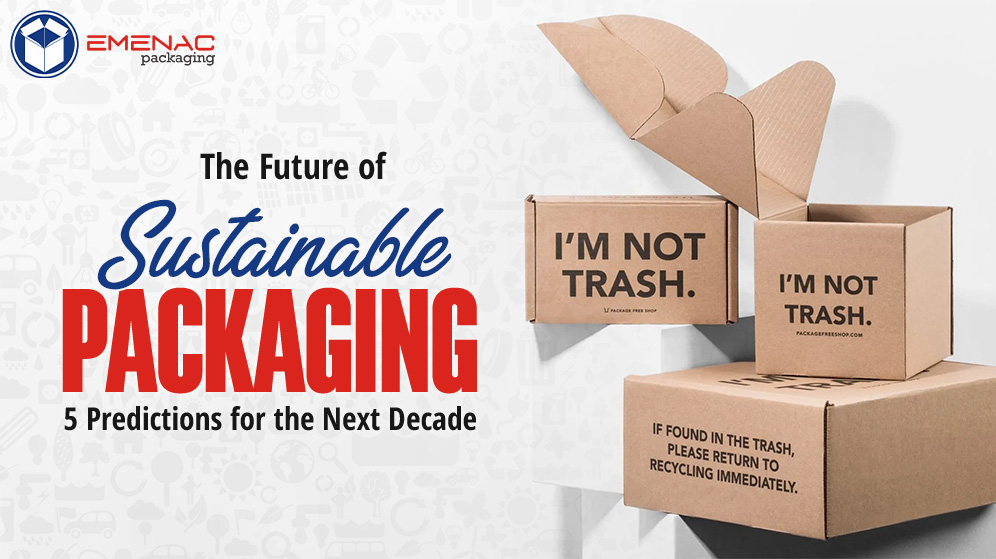
Many plastics are designed so that they can be used once and then discarded, which has led to around 5 billion tonnes of plastic ending up in landfills and the natural environment during the last 70 years. To reduce such impact, many customers today are becoming more eco-conscious and value businesses that follow sustainable practices. That’s why the packaging sector is now focusing more on sustainability. As a business owner, you should know the packaging trends and changes while staying with the current market predictions. This blog discovers the future of sustainable packaging and the 5 predictions for the packaging industry in the next decade.
Sustainable packaging is becoming a vital solution for protecting resources and reducing waste. Consumers are now going for sustainable packaging, which limits waste and reduces carbon emissions. Businesses can minimize landfill build-up and the amount of waste they generate by opting for compostable and recyclable packaging. Not only this, but by following sustainable practices, business can show their commitment to the environment.
All things predicted in 2023 will be the same for 2024. If you look at the latest Amazon packaging, it states that they use less material. This means businesses can reduce huge product weight, fuel use, transportation costs, and greenhouse gas generation when shipping sustainable corrugated boxes.
California is making the Federal Trade Commission (FTC) and the Environmental Protection Agency (EPA) peripheral. Notably, on October 7, 2023, Governor Newsom signed Senate Bill (SB) 253, which compels corporations operating in California and generating more than $1 billion in annual revenue to declare both direct and indirect emissions. On the same day, he signed SB 261, which requires corporations with yearly revenues of at least $500 million to report statistics on their climate risk management.
The New Zealand government’s phase-out of single-use plastics is already underway, with all produce bags and labels set to be gone. If you want to be ready for the change, look for alternatives and stock up beforehand. Customers expect you to act appropriately by packaging your purchases in sustainable materials; therefore, if you want to keep your valued customers, you must be proactive.
As the necessity for cost management increases, the desire for science-based, sustainable packaging decisions decreases. This reorganization indicates that the marketing department’s intention to cater to typically uneducated consumer demands and perceptions would reduce or eliminate science-based decision-making.
Adhesives and barriers are taking a more strategic role in the sustainable packaging market. The main goal is to alter non-recyclable and fossil fuel-based materials that contaminate or reduce the packaging recovery stream. This practice allows companies to promote plant-based, compostable, and recyclable materials.
The future of sustainable packaging includes reusable solutions, biodegradable materials, intelligent packaging technology, a minimal design approach, and eco-friendly inks. The approaching transition to a circular economy reflects a shared commitment to reduce environmental damage. As innovation advances, collaboration between businesses and consumers becomes crucial for a greener, more responsible packaging future.